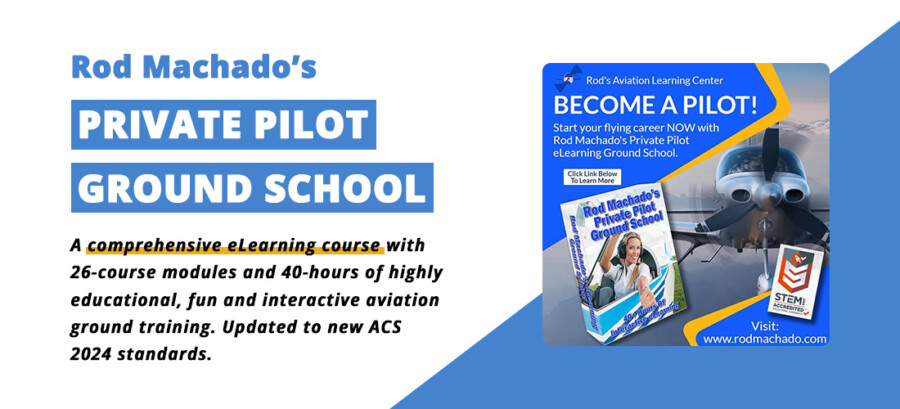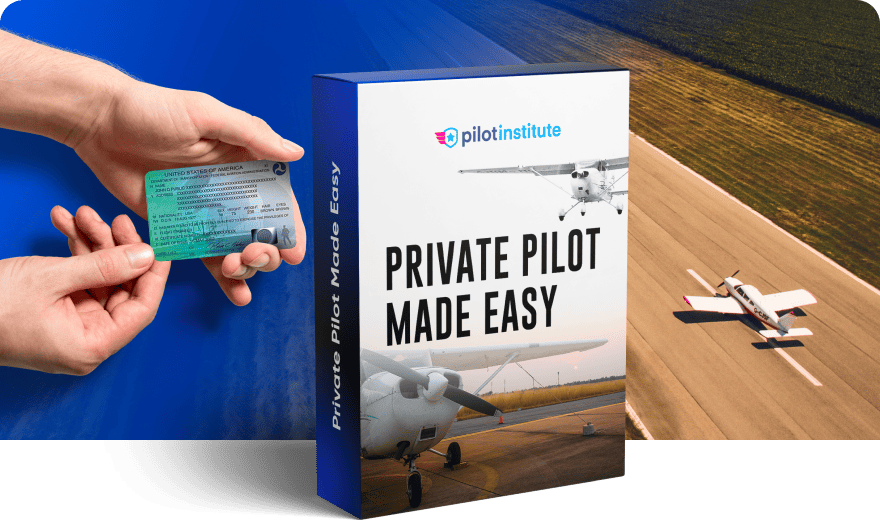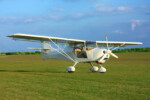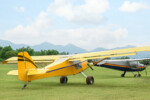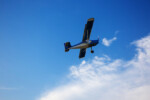The Best 4-Seat Experimental Aircraft to Build or Buy in 2025
25 November 2023 | Updated on January 06, 2025
As we fly into 2025, the exciting world of airplanes and aviation is more amazing than ever, especially for those who love the idea of one day having their own airplane.
Experimental aircraft offer a thrilling blend of adventure and technology, with lots of choices for everyone, whether you like modern, stylish planes, high-tech features, good prices, or easy-to-build kits. In this article, we’ll explore some of the best 4-seat experimental aircraft available for you to build or buy in 2025. We’ll focus on:
- Practical Insights: Understand what makes each aircraft special.
- Recommended Options: Discover the top choices in the market.
- Personal Recommendations: Get insights based on real experiences and expert opinions.
Whether you’re a seasoned pilot or a newcomer to the skies, our focus will be on providing practical insights and recommendations. We’ll explore the top choices in the market, highlighting their notable features, performance metrics, and what makes each one stand out.
Important Disclaimer: The information and data provided here are for informational purposes only, and are subject to change over time. We strive to provide the most current and relevant information, but the dynamic nature of the topics discussed may result in changes that are not immediately reflected in our content. We recommend our readers to conduct their own research and consult with professionals when making significant decisions based on the data or information provided here. Your reliance on the information in this post is solely at your own risk.
What are Experimental Aircraft?
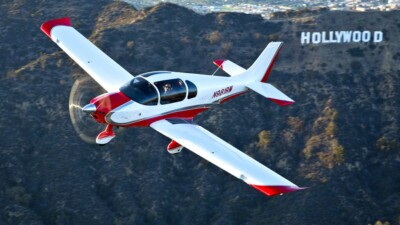
The Sling 4 is a popular experimental airplane with 4 seats.
Before we delve into the top options for 4-seat experimental aircraft, it’s important to first understand the experimental aircraft category and its requirements.
The experimental aircraft category, as defined by the Federal Aviation Administration (FAA), includes a range of non-standard aircraft such as amateur-built, kit-built, and some factory-built models. These aircraft are primarily intended for educational or recreational use, not for commercial purposes. To ensure safety, they must undergo a thorough inspection to receive a special airworthiness certificate from the FAA.
The term “experimental” refers to the FAA’s classification system, indicating that these aircraft are partially built by amateurs rather than fully by manufacturers. This category originated in the 1930s to regulate the growing innovation in aviation. One key FAA requirement for these kits is the “51% rule“, which requires the builder to personally complete or assist in over half of the construction and installation processes.
Why Choose a 4-Seat Experimental Aircraft?
When you think about flying, what comes to mind? For many, it’s the freedom of soaring through the skies, the thrill of piloting, and the joy of sharing these experiences with others. This is where a 4-seat experimental aircraft shines. But why choose a four-seater, especially if you’re considering building or buying one in 2025? Let’s dive in.
More Room, More Fun
A 4-seat aircraft is perfect for bringing along family or friends. Whether it’s a weekend getaway or just a joyride, having four seats means more shared experiences and memories. The added space isn’t just about carrying more passengers; it also means more room for luggage, camping gear, or whatever else you might want to bring along on your adventures.
The Joy of Building
Building your own aircraft is not just about the end result; it’s about the journey. Each bolt, wire, and panel is a testament to your dedication and skill. And when you build, you have the freedom to customize. Want a specific avionics package or a unique paint job? It’s all up to you.
Cost-Effectiveness
Generally, building an experimental aircraft can be more cost-effective than buying a commercially manufactured plane. You’re not just buying an aircraft; you’re investing in a hobby and a passion.
The process of building also teaches valuable skills and knowledge about aviation mechanics and engineering. This knowledge can save you money in the long run on maintenance and upgrades.
4 great 4-seat Experimental Aircraft to consider in 2025
The world of experimental aviation continues to evolve, bringing forth an array of impressive 4-seat aircraft that cater to a variety of needs and preferences. In this section, we’re going to introduce you to some of the best 4-seat experimental aircraft available for building or buying this year. Each model has been carefully selected based on its performance, reliability, ease of construction (for those looking to build), and overall user satisfaction.
Whether you’re a first-time builder, a seasoned pilot looking for a new project, or someone interested in purchasing a ready-to-fly model, these aircraft represent the pinnacle of what the experimental aviation community has to offer. We’ll delve into the specifics of each model, highlighting their unique features, pros and cons, and sharing insights from builders and pilots who have firsthand experience with these planes.
1. Vans RV-10


In the realm of 4-seat experimental aircraft, the Vans RV-10 is a standout choice, especially for those seeking a harmonious mix of performance, handling, and cost-effectiveness. This aircraft is more than just a four-seater; it’s designed to comfortably carry four adults, full fuel, and additional baggage without exceeding its maximum gross weight. The spacious cabin is a highlight, comfortably accommodating individuals up to 6’4” tall in both front and back seats, a rare find in smaller aircraft. The adjustability of the pilot seats and the convenience of composite gull-wing doors for easy boarding further enhance its appeal.
The RV-10 isn’t just about space and comfort; it’s also about the experience it offers. If your flying adventures often include more than two people, and you appreciate aircraft that excel in performance and handling, the RV-10 deserves your attention. It’s an aircraft that not only meets the practical needs of travel but also adds an element of enjoyment to every flight.
Learn more on the Van’s Aircraft website
2. Lancair Mako


When purchasing a Lancair, a retractable nose gear is offered as an option, to improve aerodynamic performance. This option adds another 10 to 12 knots of cruise speed with the nose gear tucked away. Although the pilot can override it, gear operation is fully automatic, based on a number of parameters including speed and GPS altitude.
The Lancair Mako emerges as another standout in the 4-seat experimental aircraft market, offering an impressive blend of speed, utility, and style. It positions itself as an affordable alternative to higher-end models like the Cirrus or Corvalis/TTx, without compromising on performance. The Mako is not just about efficient travel; it’s about doing so with a flair of elegance and comfort.
Key features of the Mako include optional air conditioning, a BRS parachute, and icing protection, allowing for enhanced safety and customization to suit individual preferences. The aircraft also boasts a larger baggage door and increased capacity, ideal for longer journeys or carrying more gear. With its sleek design and elegant lines, the Mako stands out for its ramp appeal, reflecting Lancair’s commitment to quality and attention to detail. For those seeking a high-performance, cost-effective 4-seat aircraft, the Lancair Mako is a compelling choice in 2025.
Learn more on the website of Lancair
3. Sling 4
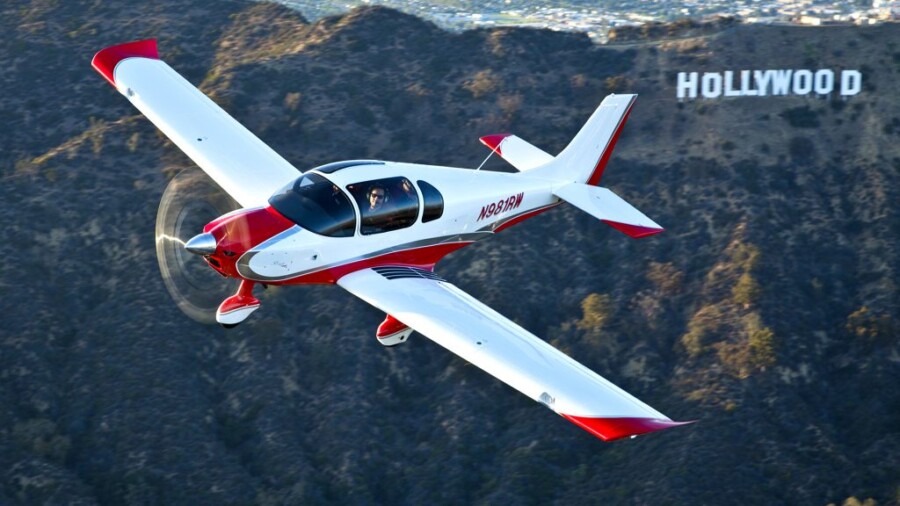

The Sling 4 Turbo Kit is a notable entry in the 4-seat experimental aircraft market, designed to fill a niche for a practical, lightweight, and desirable aircraft. Essentially an elongated version of the Sling LSA, the Sling 4 Turbo is equipped with a more powerful Rotax 914 Turbo engine and features gullwing doors instead of a sliding canopy. This aircraft is tailored for those who seek an affordable yet high-performing cross-country aircraft. It comfortably seats four people and has sufficient baggage capacity, making it an ideal choice for family trips or group adventures.
Pilots who have flown the Sling 4 often praise its flying characteristics, noting its perfectly coordinated and highly responsive controls that are not overly sensitive, offering a balance between sporty handling and comfortable cruising. The aircraft’s construction uses aluminum for ease of maintenance and durability, and it comes with a variety of customization options, including a ballistic parachute for safety. The Sling 4 Turbo is often lauded for its spacious cabin, which provides ample knee-room and a sense of roominess, comparable to much larger aircraft. Its turbo performance, with a climb rate of 900 fpm and a cruise speed of over 130 KTAS, combined with its economical operating cost, makes the Sling 4 a well-rounded choice for pilots looking for efficiency and reliability in their flying adventures.
Learn more on the Sling website
4. MCR 4S Evolution


The MCR 4S Evolution is a distinctive choice in the 4-seat experimental aircraft category, known for its blend of efficiency and performance. With a payload capacity of 430 kg, it stands out as an aircraft capable of carrying four passengers while offering a long range of up to 6 hours, high security, and an impressive speed of 160 knots (TAS at FL125). The MCR 4S Evolution is available with a choice of Rotax engines ranging from 100 hp to 140 hp, catering to various performance needs and preferences.
Pilots who have experienced the MCR 4S Evolution often commend its versatility and efficiency. The aircraft’s rear seats can be folded to increase trunk volume, adding to its practicality for different types of journeys. Additionally, all models are equipped to receive a BRS parachute system, enhancing safety. The aircraft’s dimensions, including a wingspan of 8.66 m and a cabin width of 1.17 m, contribute to its overall performance and comfort. The MCR 4S Evolution is appreciated for its ability to combine a high level of security, speed, and range, making it a well-rounded option for pilots seeking an economical yet capable 4-seat aircraft.
Learn more on the website of MCR here
Key factors to consider when choosing an Experimental Aircraft
Choosing the right experimental aircraft is a crucial decision that requires careful consideration. Here are the key factors that you should keep in mind:
Performance
One of the most important factors to consider when choosing an experimental aircraft is its performance capabilities. This includes its maximum speed, range, endurance, and altitude. You should select an aircraft that meets your specific needs and flying goals. For example, if you plan to fly long distances, you’ll need an aircraft with a longer range and greater endurance.
Safety Features
Safety should always be a primary concern when selecting an experimental aircraft. Ensure that the aircraft you choose has state-of-the-art safety features such as anti-icing systems, fire suppression systems, and advanced avionics.
Cost
Experimental aircraft can be expensive, so cost is a crucial factor to consider. You should factor in not only the purchase price but also the cost of maintenance, fuel, and insurance. Consider your budget and ensure that the aircraft you choose fits within it.
Complexity
The complexity of an experimental aircraft can impact its ease of use and safety. If you’re new to flying, it’s advisable to start with a simpler aircraft and work your way up to more complex ones. An aircraft with simple systems and controls will be easier and safer to operate.
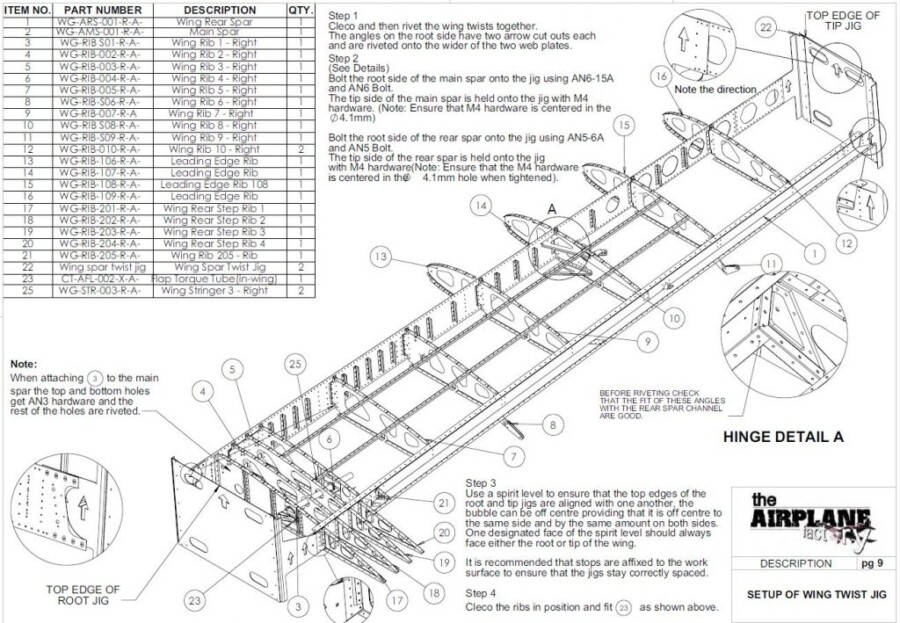

An extract of the Sling 4 building plans.
Builder Support
If you’re building your own experimental aircraft, it’s crucial to obtain builder support from the manufacturer or other experienced builders. This support can include technical assistance, training, and access to spare parts. Ensure that you choose a manufacturer that provides robust builder support to make your build process smoother.
Availability of Parts
Consider the availability of replacement parts when choosing an experimental aircraft. It’s important to select an aircraft for which parts are readily available in case of repairs or maintenance. This will save you time and money in the long run.
Building your own 4-seat experimental aircraft step-by-step
Building your own 4-seat experimental aircraft can be a rewarding and satisfying experience for aviation enthusiasts. The process may seem daunting, but with careful planning and attention to detail, it can be accomplished with ease.
Step 1: Research and Planning
The first step in building your own aircraft is researching and planning. Research different aircraft designs, components, and kits that are available, and decide on the one that best suits your needs and budget. Make a list of required materials, tools, and costs, and create a detailed plan outlining the build process.
Step 2: Sourcing Materials
Once you have a plan, it’s time to source materials. Purchase a kit or individual components from a reputable supplier. Make sure to obtain all required permits, licenses, and inspections before beginning any work.
Step 3: Assembly
The assembly process can take an average of 1000 hours, but the reward is worth the effort. Follow the manufacturer’s instructions on building the aircraft, and always seek the help of a licensed and experienced mechanic or builder. Make sure to keep the aircraft’s logbook updated with all build information and inspections.
Step 4: Testing and Inspection
Before taking your aircraft up in the air, it’s important to conduct thorough testing and inspections. Inspect the aircraft for any defects and conduct ground tests to ensure the aircraft is working correctly. Once inspections are passed, take the aircraft on its maiden flight with an experienced pilot.
Step 5: Certification
Once your aircraft passes all inspections and tests, it’s time for certification. Register the aircraft with the FAA and obtain a Certificate of Airworthiness. This will ensure that your aircraft is eligible for flight and meets all necessary safety and regulatory requirements.
“Building your own aircraft is a journey that requires careful planning, attention to detail, and patience. But the result is an aircraft that you truly understand, control, and appreciate. It’s a feeling like no other.”
Building your own 4-seat experimental aircraft can be a challenging yet rewarding experience. With careful planning, attention to detail, and the right resources, you can achieve flight in an aircraft that you built with your own two hands.
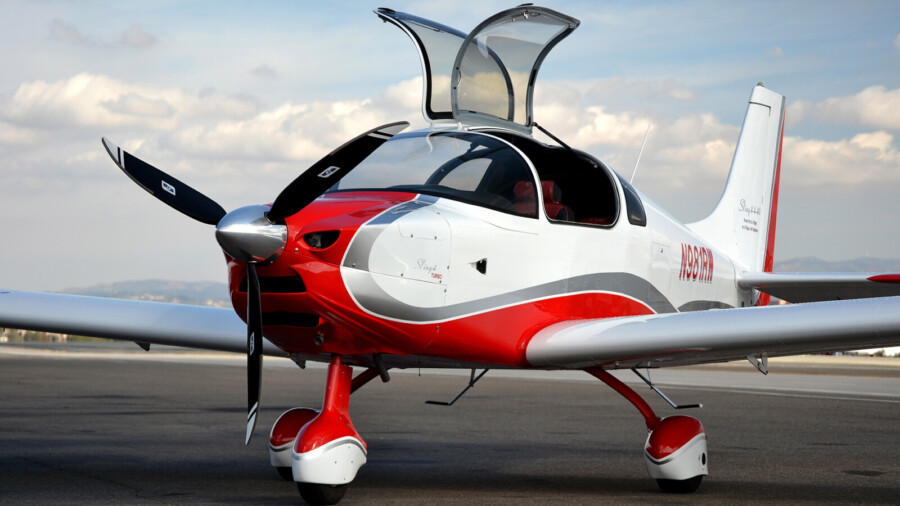

The Sling 4 Experimental aircraft kit.
Buying a 4-seat experimental aircraft – What you need to know
The process of buying an experimental aircraft rather than building one can be an equally interesting, rewarding and valuable experience. However, there are several factors that you need to consider before making your purchase. Here are some things to keep in mind:
1. Research aircraft models
Before buying an aircraft, it’s critical to do your research. Consider the type of flying you will be doing and look for models that suit your needs. Also, research the manufacturer’s reputation and safety records.
2. Determine your budget
Experimental aircraft can be costly, so it’s important to set a budget before starting your search. Be sure to factor in the cost of any necessary upgrades or modifications.
3. Consider the aircraft’s condition
When purchasing an experimental aircraft, it’s important to thoroughly inspect its condition. Look for signs of wear and tear, and check the maintenance records to ensure the aircraft has been well cared for.
4. Get a professional inspection
Before finalizing your purchase, it’s vital to have the aircraft inspected by a licensed professional. This can help identify any hidden issues or potential problems that could lead to safety concerns.
5. Understand the regulations
Experimental aircraft are subject to different regulations than standard aircraft. It’s essential to understand these regulations and ensure that the aircraft you are buying meets all necessary requirements.
“Buying an experimental aircraft can be a complex process, but with careful research and professional guidance, you can find the perfect aircraft for your needs.”
Cost analysis and budgeting
Investing in an (experimental) aircraft is undoubtedly an exciting prospect, but it’s important to consider the financial implications before making a commitment. In this section, we’ll break down the costs associated with owning a 4-seat experimental aircraft and provide some useful budgeting tips.
Cost Analysis
The cost of a 4-seat experimental aircraft varies greatly depending on whether you choose to build or buy. Building your own aircraft can cost anywhere from $40,000 to $200,000 or more, depending on the materials used and labor involved. On the other hand, purchasing a pre-built aircraft can range from $50,000 to $300,000 or more, depending on the model and its features.
Aside from the initial purchase/building cost, it’s important to factor in ongoing expenses. Maintenance, fuel, and hangar rental fees can add up quickly. Additionally, experimental aircraft may require more frequent maintenance and inspections than traditional certified aircraft, which can lead to higher costs.
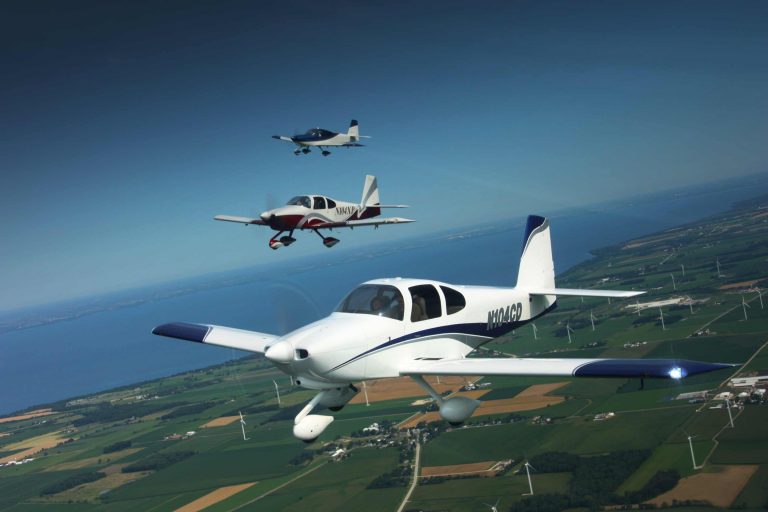

A formation of the hugely popular Van’s RV-10 aircraft
Budgeting Tips
Creating a budget is an essential step in the process of owning a 4-seat experimental aircraft. The following tips can help you establish a budget that meets your financial needs:
- Research the costs associated with building or purchasing the specific model you’re interested in.
- Factor in ongoing expenses such as maintenance, fuel, and hangar rental fees.
- Consider reducing costs by building your aircraft with a group of like-minded individuals or purchasing a used aircraft.
- Plan for unexpected expenses by setting aside a “rainy day” fund.
With proper planning and budgeting, owning a 4-seat experimental aircraft can be a rewarding and exhilarating experience. Remember to consider all costs, both initial and ongoing, to ensure a smooth and successful ownership experience.
Conclusion
Choosing a 4-seat experimental aircraft, whether to build or buy, is about more than just owning a plane. It’s about the experiences you’ll have, the skills you’ll learn, and the joy of sharing the skies with others. In 2025, with technology and resources more accessible than ever, it’s a fantastic time to embark on this journey. Whether you’re a seasoned pilot or a newcomer to the world of aviation, a 4-seat experimental aircraft offers a unique blend of adventure, challenge, and fun.
Good luck!





















